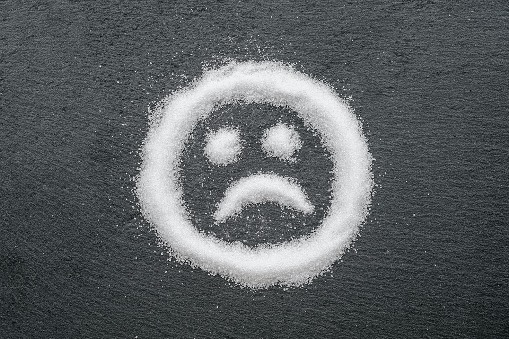STI/STD - AN OVERVIEW
Sexually transmitted infections (STIs), also referred to as sexually transmitted diseases (STDs), are infections that can be transmitted via sexual touch, such as vaginal, anal, or oral sex. These infections can be caused by bacteria, viruses, or parasites, and they are able to have an effect on anybody who is sexually active. Early detection and treatment of STIs are crucial to save you from complications, like, infertility, pelvic inflammatory disorder, some cancers, and the transmission of infections to sexual partners. Routine screenings, safe sex practices, and open verbal communication can make a contribution to reducing the presence and impact of STIs.
Individuals concerned about STIs should seek advice from healthcare professionals, who can provide testing, treatment, and guidance on prevention strategies. It’s also important to note that abstinence or monogamous relationships with mutually uninfected partners are effective ways to reduce the risk of STIs.
Some common sexually transmitted diseases are:
Chlamydia is a common sexually transmitted infection (STI) caused by the bacterium Chlamydia trachomatis. It is one of the most prevalent bacterial STIs worldwide, and it can affect both men and women. Chlamydia is often asymptomatic, meaning many individuals infected with the bacteria may not experience noticeable symptoms. However, even without symptoms, Chlamydia can still cause complications if left untreated.
Here is an overview of Chlamydia:
Transmission:
Sexual Contact: Chlamydia is primarily transmitted through unprotected sexual activity, including vaginal, anal, and oral sex. It can be spread from one person to another through contact with infected genital, rectal, or throat fluids.
Mother-to-Child Transmission: A pregnant woman with Chlamydia can pass the infection to her newborn during childbirth, potentially leading to eye and respiratory tract infections in the newborn.
Symptoms:
Often Asymptomatic: Many people with Chlamydia do not experience symptoms, especially in the early stages of infection.
Possible Symptoms in Women:
Abnormal vaginal discharge
Painful urination
Abdominal pain
Pain during sexual intercourse
Bleeding between menstrual periods
Possible Symptoms in Men:
Discharge from the penis
Burning sensation during urination
Testicular pain or swelling
Complications:
If left untreated, Chlamydia can lead to various complications, including:
Pelvic Inflammatory Disease (PID): In women, untreated Chlamydia can ascend to the upper reproductive organs, causing PID, which can lead to chronic pelvic pain, infertility, and an increased risk of ectopic pregnancy.
Epididymitis: In men, Chlamydia can cause inflammation of the epididymis, a tube that carries sperm, leading to pain and swelling.
Reactive Arthritis: Chlamydia infection can trigger reactive arthritis, a condition that causes joint pain and inflammation.
Diagnosis:
Laboratory Testing: Chlamydia can be diagnosed through laboratory testing of urine, swabs from the genital, rectal, or throat areas, or by nucleic acid amplification tests (NAATs).
Treatment:
Antibiotics: Chlamydia is typically treated with antibiotics, commonly azithromycin or doxycycline. It’s crucial to complete the full course of antibiotics even if symptoms improve.
Prevention:
Safe Sex Practices: Using condoms consistently and correctly during sexual activity can reduce the risk of Chlamydia and other sexually transmitted infections.
Regular Testing: Routine testing for Chlamydia is recommended, especially for individuals with multiple sexual partners or those at a higher risk.
Chlamydia is a curable infection, and early detection and treatment are essential to prevent complications and reduce the spread of the bacteria. Individuals who are sexually active, especially those with new or multiple sexual partners, should undergo regular STI screenings as part of their overall health care.
Gonorrhea is a sexually transmitted infection (STI) caused by the bacterium Neisseria gonorrhoeae. It can affect both men and women and is transmitted through sexual contact, including vaginal, anal, and oral sex. Gonorrhea is a common bacterial STI, and like Chlamydia, it can be asymptomatic, meaning many individuals may not experience noticeable symptoms.
Transmission:
Sexual Contact: Gonorrhea is primarily transmitted through unprotected sexual activity with an infected person. It can infect the genital, rectal, and throat areas.
Symptoms:
Symptomatic and Asymptomatic Cases:
Many people infected with Gonorrhea may not have symptoms.
When symptoms occur, they can vary between men and women.
Possible Symptoms in Women:
- Abnormal vaginal discharge
Pain or burning during urination - Abdominal or pelvic pain
- Painful sexual intercourse
- Bleeding between menstrual periods
Possible Symptoms in Men:
- Discharge from the penis
- Burning sensation during urination
- Testicular pain or swelling
Complications:
If left untreated, Gonorrhea can lead to various complications:
- Pelvic Inflammatory Disease (PID): In women, untreated Gonorrhea can ascend to the upper reproductive organs, causing PID, which can lead to chronic pelvic pain, infertility, and an increased risk of ectopic pregnancy.
- Epididymitis: In men, Gonorrhea can cause inflammation of the epididymis, leading to pain and swelling.
- Disseminated Gonococcal Infection (DGI): A more severe form of Gonorrhea that can affect multiple parts of the body, leading to joint pain, skin lesions, and other symptoms.
Diagnosis:
Laboratory Testing: Gonorrhea can be diagnosed through laboratory testing of urine, swabs from the genital, rectal, or throat areas, or by nucleic acid amplification tests (NAATs).
Treatment:
Antibiotics: Gonorrhea is typically treated with antibiotics, commonly ceftriaxone. Due to the increasing prevalence of antibiotic-resistant strains, the choice of antibiotics may vary, and it’s essential to complete the full course of medication.
Prevention:
Safe Sex Practices: Consistent and correct use of condoms during sexual activity can reduce the risk of Gonorrhea and other sexually transmitted infections.
Regular Testing: Routine testing for Gonorrhea is recommended, especially for individuals with multiple sexual partners or those at a higher risk.
SYMPTOMS OF STD/STIs
CAUSES OF STD/STIs
Sexually transmitted diseases (STDs) are caused by the transmission of infectious microorganisms, including bacteria, viruses, and parasites, from one person to another through sexual activity. Here are the primary causes of STDs:
Bacteria:
Chlamydia (Chlamydia trachomatis): A bacterial infection affecting the genital and urinary tracts. It is one of the most common bacterial STDs.
Gonorrhea (Neisseria gonorrhoeae): Caused by a bacterium that can infect the genital, rectal, and throat areas. It often coexists with chlamydia.
Syphilis (Treponema pallidum): A bacterial infection that progresses through stages if left untreated, leading to various symptoms and complications.
Viruses:
Herpes Simplex Virus (HSV-1 and HSV-2): Causes painful sores or blisters on or around the genital or oral areas. It is a lifelong infection with recurrent outbreaks.
Human Papillomavirus (HPV): A group of viruses associated with genital warts and an increased risk of various cancers, including cervical cancer.
Human Immunodeficiency Virus (HIV): Attacks the immune system, leading to acquired immunodeficiency syndrome (AIDS). It is primarily transmitted through unprotected sexual intercourse, sharing needles, and from mother to child during childbirth or breastfeeding.
Hepatitis B and C: Viruses that primarily affect the liver. They can be transmitted through sexual contact, sharing of needles, or from an infected mother to her child during childbirth.
Parasites:
Trichomoniasis (Trichomonas vaginalis): A parasitic infection that can affect the genital and urinary tracts. It is caused by a single-celled organism.
Fungi:
Candidiasis (Yeast Infection): While commonly associated with women’s health, yeast infections can affect both men and women. They are caused by the overgrowth of the Candida fungus.
Protozoa:
Pubic Lice (Crab Lice): While not a traditional STD, pubic lice infestations can be transmitted through sexual contact. They are caused by tiny insects that infest coarse body hair.
Modes of Transmission:
Unprotected Sexual Contact: STDs are primarily transmitted through vaginal, anal, or oral sex without the use of barrier methods such as condoms.
Sharing Needles: Intravenous drug use involving the sharing of needles can lead to the transmission of bloodborne infections, including HIV and hepatitis.
Mother-to-Child Transmission: Some STDs can be transmitted from an infected mother to her child during childbirth or breastfeeding.
PREVENTION OF STD/STIs
Preventive measures, regular testing, and open communication with sexual partners are essential components of reducing the transmission and impact of STDs. If you have concerns about STDs, consult with a healthcare professional for guidance and testing options.
Safe Sex Practices: Using condoms consistently and correctly during sexual activity can reduce the risk of many STDs.
Vaccination: Vaccines are available for preventing certain viral infections, such as HPV and hepatitis B.
Regular Testing: Routine screening and testing for STDs, especially for individuals with multiple sexual partners, can help with early detection and treatment.
STD/STIs DIAGNOSIS
The most commonly used criteria for diagnosis are those established by the Rotterdam criteria, which require the presence of at least two out of the following three criteria:
- Irregular or absent menstrual cycles
- Clinical or biochemical signs of hyperandrogenism (such as hirsutism or elevated androgen levels)
- Polycystic ovaries on ultrasound
Here are the key steps involved in the diagnosis of PCOS:
Medical History: The healthcare provider will inquire about your menstrual history, including the regularity of your periods, any changes in menstrual flow, and the presence of other symptoms such as acne or excessive hair growth. They will also ask about your family and personal medical history.
Physical Examination: A physical examination may be conducted to assess signs of PCOS, such as hirsutism (excessive hair growth), acne, and signs of insulin resistance. The provider may also perform a pelvic examination to check for any abnormalities.
Blood Tests:
- Hormone Levels: Blood tests may be conducted to measure hormone levels, including levels of androgens (such as testosterone), estrogen, and progesterone. Elevated levels of androgens are common in PCOS.
- Lipid Profile: Since women with PCOS may be at a higher risk of cardiovascular issues, a lipid profile may be done to assess cholesterol levels.
- Insulin Levels: Testing for insulin resistance may be considered, as insulin resistance is commonly associated with PCOS.
Ultrasound Imaging: A pelvic ultrasound may be performed to visualize the ovaries. The presence of multiple small cysts on the ovaries, often referred to as a “string of pearls” appearance, is a common characteristic of PCOS. However, it’s important to note that not all women with PCOS will have this feature, and not all women with this ovarian appearance necessarily have PCOS.
Exclusion of Other Conditions: The healthcare provider may perform tests to rule out other conditions that can mimic PCOS symptoms.
ALLOPATHY APPROACH TOWARDS STD/STIs TREATMENT
The allopathic (conventional medical) approach to the treatment of sexually transmitted diseases (STDs) or sexually transmitted infections (STIs) involves a combination of medical interventions, including antibiotics, antiviral medications, and supportive care. The specific treatment plan depends on the type of infection, its severity, and other individual factors. Here’s a general overview of the allopathic approach:
Antibiotics for Bacterial Infections:
Chlamydia and Gonorrhea: These common bacterial infections are often treated with antibiotics, such as azithromycin or doxycycline for chlamydia, and ceftriaxone combined with azithromycin for gonorrhea.
Syphilis: The treatment involves antibiotics, typically penicillin. The specific regimen depends on the stage of syphilis.
Antiviral Medications for Viral Infections:
Herpes (HSV-1 and HSV-2): Antiviral medications like acyclovir, valacyclovir, and famciclovir can help manage symptoms and reduce the frequency and severity of outbreaks.
HIV (Human Immunodeficiency Virus): Antiretroviral therapy (ART) is the standard treatment for HIV. It involves a combination of antiretroviral drugs that suppress the virus, allowing individuals with HIV to live healthy lives.
Hepatitis B and C: Antiviral medications are used to manage chronic infections. For hepatitis B, medications like tenofovir and entecavir are common. For hepatitis C, direct-acting antivirals (DAAs) are used.
Parasitic Infections:
Trichomoniasis: The parasitic infection trichomoniasis is commonly treated with the antibiotic metronidazole or tinidazole.
Supportive Care:
Symptomatic Relief: In addition to specific antimicrobial treatments, supportive care may be provided to manage symptoms. This can include pain relief, anti-inflammatory medications, and other measures to improve comfort.
Follow-Up and Monitoring:
Regular Testing: Follow-up testing is often recommended to ensure that the infection has been successfully treated.
Partner Notification and Testing: Partners of individuals diagnosed with an STD may also be advised to undergo testing and treatment to prevent the spread of the infection.
AYURVEDA APPROACH TOWARDS STD/STIs TREATMENT
Ayurveda, the traditional system of medicine that originated in India, offers a holistic approach to health and wellness. In the context of sexually transmitted diseases (STDs) or sexually transmitted infections (STIs), Ayurveda aims to balance the body, mind, and spirit, and it employs various natural remedies, lifestyle modifications, and detoxification techniques. It’s important to note that Ayurveda’s approach is individualized, and treatments may vary based on an individual’s unique constitution (Prakriti) and imbalances (Vikriti). Here are some general principles and approaches in Ayurveda for managing STDs or STIs:
Herbal Remedies:
Neem (Azadirachta indica): Known for its antibacterial, antiviral, and antifungal properties, neem is considered beneficial for various infections.
Guduchi (Tinospora cordifolia): This herb is traditionally used for its immunomodulatory effects and is believed to support the body’s natural defenses.
Turmeric (Curcuma longa): With its anti-inflammatory and antimicrobial properties, turmeric is often included in Ayurvedic formulations for managing infections.
Triphala: A combination of three fruits (amalaki, bibhitaki, and haritaki), Triphala is known for its detoxifying and immune-boosting effects.
Detoxification (Panchakarma):
Virechana (Purgation): This Panchakarma therapy involves the use of purgative substances to eliminate toxins from the body. It is believed to help in cleansing and balancing the doshas.
Basti (Enema): Basti involves the administration of medicated enemas to eliminate excess doshas and toxins from the colon.
Dietary Recommendations:
Anti-Inflammatory Diet: Emphasis on foods with anti-inflammatory properties, including fresh fruits, vegetables, whole grains, and herbs.
Detoxifying Foods: Include foods that support the body’s natural detoxification processes, such as warm water, herbal teas, and specific dietary herbs.
Lifestyle Modifications:
Stress Management: Ayurveda recognizes the impact of stress on health. Practices such as yoga, meditation, and pranayama (breathing exercises) are recommended for stress reduction.
Healthy Sleep Patterns: Adequate and quality sleep is considered essential for overall well-being and immune function.
Individualized Treatment:
Ayurvedic practitioners assess an individual’s constitution (Prakriti) and imbalances (Vikriti) to tailor treatments to their specific needs.
It’s crucial to emphasize that Ayurveda is a complementary system of medicine, and individuals diagnosed with STDs or STIs should seek advice from qualified healthcare professionals, including allopathic doctors. Ayurveda can be integrated with conventional medical care to provide a holistic approach to health. Always inform healthcare providers about any complementary or alternative treatments you are considering to ensure coordinated and safe care.
ROLE OF PANCHKARMA IN STD/STIs TREATMENT
Panchakarma is a set of Ayurvedic therapeutic procedures designed to detoxify and rejuvenate the body. While Panchakarma may not be a primary treatment for sexually transmitted diseases (STDs) or sexually transmitted infections (STIs), it is sometimes used as a complementary approach in Ayurveda to address underlying imbalances and support overall health. Here are some aspects of how Panchakarma may be considered in the context of STD/STI treatment:
Detoxification:
Panchakarma procedures aim to eliminate accumulated toxins (ama) from the body. Detoxification is believed to support the balance of doshas (Vata, Pitta, Kapha) and improve overall health.
Balancing Doshas:
In Ayurveda, imbalances in the doshas are associated with various health conditions. Panchakarma is designed to balance these doshas, and it may be used to address imbalances that contribute to the manifestation of diseases, including certain infections.
Stress Reduction:
Stress is known to affect the immune system, and managing stress is considered an important aspect of Ayurvedic healing. Panchakarma therapies, such as Abhyanga (oil massage) and Shirodhara (a continuous flow of warm oil on the forehead), are believed to help reduce stress and promote relaxation.
Enhancing Digestion and Metabolism:
Panchakarma procedures, including Basti (medicated enema), are intended to improve digestion and metabolism. This may be relevant in the context of STDs/STIs, as digestive and metabolic factors can influence overall health.
Individualized Treatment:
Ayurvedic practitioners consider an individual’s constitution (Prakriti) and imbalances (Vikriti) when recommending Panchakarma procedures. The treatment is personalized based on the specific needs of the individual.
Herbal Support:
Panchakarma treatments are often complemented by the use of specific herbal preparations tailored to an individual’s needs. These herbs may further support the body’s natural healing processes.
STD/STIs TREATMENT AT DR MONGA MEDI CLINIC
At Dr Monga Medi Clinic, we try to follow an ideal approach to dealing with patients who have sexually transmitted diseases (STDs), which involves a comprehensive and compassionate strategy that encompasses prevention, testing, treatment, counseling, and support.
Our approach includes:
Open and Non-Judgmental Communication:
Create an environment where patients feel comfortable discussing their sexual health without fear of judgment. Encourage open and honest communication to gather accurate information about their sexual history and concerns.
Educational Counseling:
Provide clear and accurate information about the specific STD/STI, including transmission methods, symptoms, treatment options, and potential complications. Offer educational resources to enhance the patient’s understanding.
Confidentiality and Privacy:
Emphasize the importance of confidentiality and privacy to build trust. Ensure that patient information is handled with the utmost sensitivity and in compliance with privacy regulations.
Comprehensive Testing:
Conduct thorough testing based on the patient’s sexual history and symptoms. Discuss the importance of testing for other relevant STDs/STIs, and ensure that the patient understands the purpose of each test.
Timely Treatment and Management:
If a diagnosis is confirmed, provide timely and appropriate treatment options. Discuss the potential benefits and side effects of medications and address any concerns the patient may have.
Partner Notification and Testing:
Encourage patients to notify their sexual partners and recommend partner testing to prevent further transmission. Provide guidance on how to communicate with partners about potential exposure.
Prevention Strategies:
Discuss preventive measures, including safe sex practices (consistent and correct condom use), vaccination (where applicable), and risk reduction strategies. Offer resources for sexual health education and prevention.
Psychosocial Support:
Recognize the emotional impact of an STD diagnosis. Provide psychosocial support, counseling, and resources to help patients cope with the psychological aspects of the diagnosis.
Follow-Up Care:
Establish a follow-up plan to monitor treatment effectiveness, address any ongoing concerns, and provide additional support if needed. Ensure that patients understand the importance of follow-up care for their overall health.
Collaboration with Specialists:
Collaborate with specialists, if necessary, to address specific complications or long-term management of certain STDs. Ensure coordinated care between primary care providers and specialists.
Community Resources:
Connect patients with community resources, support groups, or organizations that can provide additional assistance, education, and ongoing support.
Prevention Education for the Community:
Contribute to community-wide efforts to prevent the spread of STDs through education, awareness campaigns, and initiatives promoting safe sex practices.
Our approach involves a combination of medical care, education, emotional support, and community involvement. Our approach is patient-centered, respectful, and focused on promoting the overall well-being of individuals and communities. Additionally, we help you stay informed about the latest developments in STD prevention and treatment by providing up-to-date care.

ERECTILE DYSFUNCTION
Erectile Dysfunction: Symptoms, Causes, Diagnosis, Treatment and Myths Are you worried about erectile dysfunction (ED)? You’re not alone, and there’s no need to feel embarrassed.

PREMATURE EJACULATION
Premature Ejaculation: Symptoms, Causes, Diagnosis, Treatment and Myths Imagine you’re playing your favorite video game, and just when you’re about to win, the game ends

Male Infertility
MALE INFERTILITY – AN OVERVIEW Male infertility is a significant reproductive health issue characterized by the inability of a man to achieve pregnancy in a












